Anatomy Of The Human Eye:
The human eye is a complex anatomical device that remarkably demonstrates the architectural wonders of the human body. Like a camera, the eye is able to refract light and produce a focused image that can stimulate neural responses and enable the ability to see.
The External Structure of the Eye:
This includes the following :
A. Eyelids :
The Eyelids or thin folds of skin that coverand protect the cornea and conjunctiva from chemical or physical activity. Two activities happen to protect the eye. Squintingwhich is closing the eye partially, sheilds the eye from excessive light, that can damage the internal structure such as the retina. Blinking on the other hand, which is closing and opening the eye rapidly, spreads tears across and and removes irritants from the cornea and conductive.
B. Eyelashes :
The Eyelashes are short, stiff hairs that shield the eye from irritants such as dust.
c. Sclera :
This is known as the "white of the eye." It is a tough and opaque outer layer. The Sclera protects the inner structure of the eye
D.Conjunctiva :
Also known as mucus membrane. This is a transparent membrane that covers the sclera and lines the inner surface of the eyelids. It lso secretes mucous and a small volume of tears for the eye to be moist. This outermost layer covers the Retina
E. Cornea :
This is the see-through skin that covers the eye. It is clear like glass (transparent) and has no blood vessels in it. This five-layered membrane is continuous with the Sclera.
It's function is to refract light rays that reach the eye, providing most of the refractive or focusing power. Unlike that of the Lens, the focusing power is fixed
F. Tear Gland :
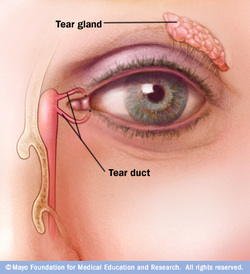 This secretes tears (tears contain salts and a bacterial enzyme) to
This secretes tears (tears contain salts and a bacterial enzyme) to
- Wash out foreign particles or chemical irritants
- Lubricate the conjunctiva which reduces friction between the the eyelids and eyeball
- Prevent the eye from drying out. The tear film allows atmospheric oxygen to dissolve and diffuse into the cornea
G. Iris :
This is a pigmented layer of muscular tissue which gives the eye its colour. That is why people have different eye colours such as brown, green, blue etc. It all depends on the Melanin Pigment. If a person has less melanin, it means the eye colour appears light. If a person has more Melanin, this means the eye colour appears darker.
The Iris has two sets of involuntary muscles: the Circular and the Radial Muscles which control the diameter of the Pupil and hence, the amount of light that enters the eye. If the size of the pupil is small, then it means that it is restricting the amount of light entering the inner eye. If the pupil is large, then it means that it is allowing light to enter the inner eye.
H.Pupil :
The Pupil is an opening at the centre of the Iris. It permits light to enter the eye.
The Internal Structure of the Eye :
After the Iris and inside the Sclera is the Inner Structure of the eye. This includes
A. Aqueous Humour:
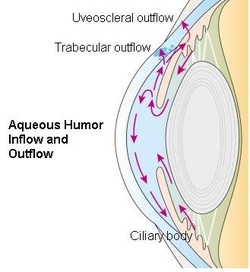
A clear, watery fluid (produced by the Ciliary cody) that fills the area between the Lens and the Cornea. It supplies nutrients that nourishes the Cornea and Lens and maintains the convex shape of the Cornea along with refracting light onto the pupil.
B.Vitreous Humour :
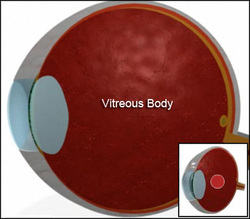
A transparent, jelly-like substance that forms the main bulk of the eyeball. While it maintains the shape of the eye, it also refracts light onto the Retina.
C.Lens :
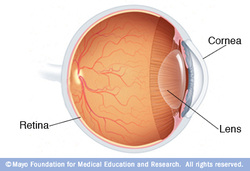
The Lens is a transparent, round, biconvex structure. It is elastic so that its curvative can be changed to adjust its refractive or fucusing power. It's responsible for focusing light onto the Retina.
D.Suspensory Ligament :
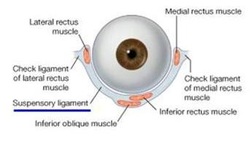
A tissue that joins the lens to the ciliary body. This hold the Lens in place.
E.Ciliary Body:
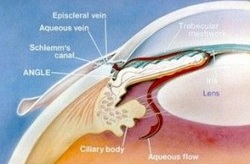
A circular band of tissues at the front of the Choroid that supports the Lens. It contains Ciliary Muscles that adjusts the curative of the Lens.
Ciliary Muscles determines the shape of the Lens. When the muscle contracts, the lens is rounder, thicker, the focal length decreases and more convex and light rays from a near object are sharply focused on the Retina. When the muscle relaxes, the Lens is flatter, the focal length increases and less convex and the light rays from a distant object are sharply focused onto the Retina. This can be described as Antagonistic (when one sewt contracts, the other relaxes)
F.Choroid :
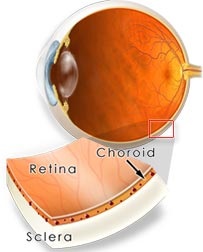
Black-pigmented layer under the Sclera that prevents the internal reflection of light rays. Filled with blood capillaries, It is rich in blood vessels that bring oxygen and nutrients to nourish the eyeball. The Choriod is modified to form the Iris and the Ciliary Body at the front of the eye.
G. Retina :
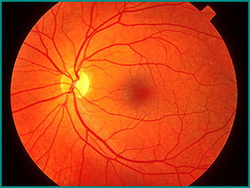
The inner-most, light sensitive layer of the eyeball, on which images are formed.
They contain Photoreceptors which are light-sensitive cells.
H. Photoreceptors :
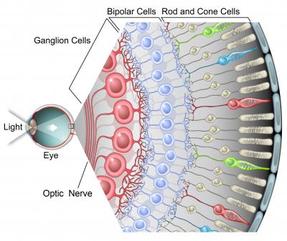
- Rods : are responsible to detect light in dim light (black and white) enabling night vision. They contain a pigment in rods called Rhodospin which is light sensitive. If exposed to bright light then it will be bleached. Rhodospin enables a person to see in the dark.
- Cones : are responsible to detect coloured light. There are green, blue and red cones. Red is used to respond to long wavelengths. Blue is used to respond to short wavelengths and Green is used to respond to medium lengths. Cones are closely paccked to allow
the perception of details but cannot work well in dim light.
I. Optic Nerve :
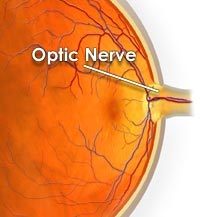
The Optic Nerve is located at the back of the eye. It transmits nerve imopulses from photoreceptors to the brain.
J . Blind Spot:
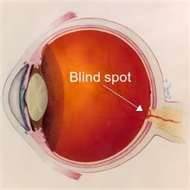
The point in the Retina where the optic nerve exits the eye. There are no photoreceptors which makes this Blind Spot insensitive to light.
K. Fovea:
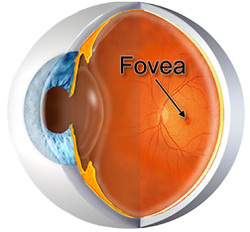
A pit in the Retina where images are focused. It has a high density of cones but it hasno rods. The Fovea permits detailed vision. It is concentrated with photoreceptors.









